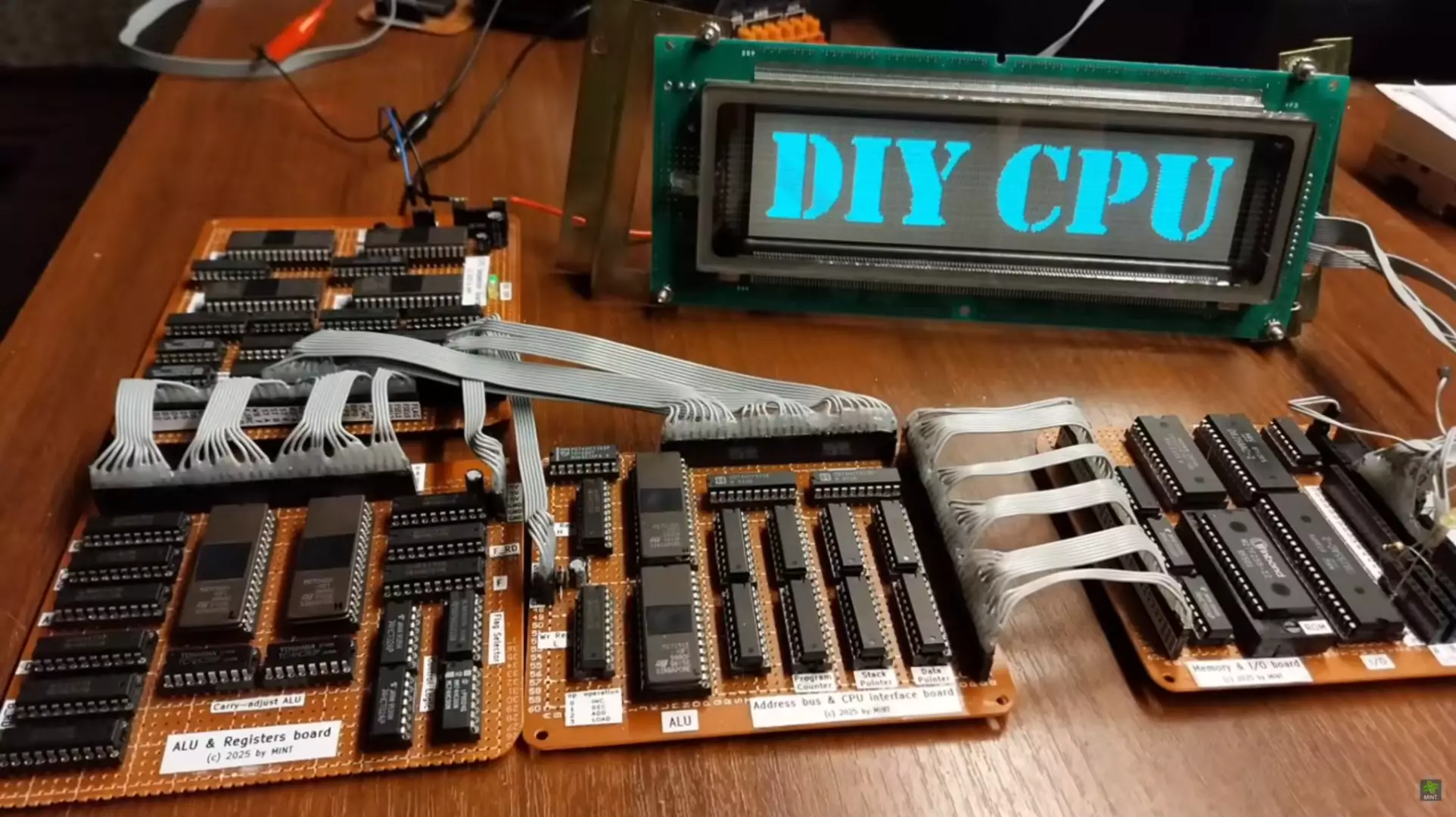In an era where technological progress seems relentless and often abstract, the notion of building something from the ground up—especially something as complex as a CPU—can feel more like a myth than a reality. Yet, the recent project by Polish DIY enthusiast Majsterkowanie i nie tylko (MINT) disrupts this perception. Rather than succumbing to the complacency of buying the latest high-performance processors, he demonstrates that ingenuity, patience, and a deep understanding of foundational principles can produce astonishing results. His DIY CPU, crafted entirely from retro components inspired by 8-bit microprocessors like the venerable Zilog Z80, embodies a radical celebration of both engineering craft and computational nostalgia.
This project is more than a nostalgic homage; it is a testament to how far technology has come and how much potential still resides in old hardware. The fact that MINT managed to design, solder, and code a functional processor from reanimated relics highlights a vital lesson: innovation need not always rely on new, expensive components. Instead, it can flourish through a meticulous understanding of fundamental principles and a willingness to experiment with the past to inspire future applications.
The significance of reappropriating old tech
The decision to utilize vintage memory chips and older microprocessor design philosophies is particularly compelling. In a world driven by Moore’s Law and the relentless pursuit of miniaturization, it’s easy to overlook the value of legacy hardware. However, MINT’s experiment underscores how vintage technology still possesses instructional and practical worth. By repurposing and integrating these old parts into a functioning CPU, he not only challenges the prevailing narrative of obsolescence but also offers insight into the evolution of computing architecture.
The project underscores a broader philosophical reflection: technological progress isn’t only about creating faster, smaller, and more sophisticated devices but also about understanding the roots of the many systems we rely on. Building a CPU from retro parts transforms abstract theoretical knowledge into tangible accomplishment, fostering a deeper appreciation for the discipline. It elevates DIY electronics from a fringe hobby into a potent form of education and personal empowerment.
The craftsmanship and meticulous effort involved
Constructing a processor from scratch, especially one inspired by 8-bit designs, is an enormous undertaking. MINT spent hundreds of hours soldering intricate circuits, debugging hardware, and writing low-level code to make everything communicate correctly. His commitment illuminates a seldom-appreciated aspect of technology: craftsmanship. In a culture where the focus tends to be on software hacks, automated chip design, or pre-made kits, MINT’s work champions the artisanal aspect of engineering.
The project also exemplifies perseverance and a keen eye for detail. Building a CPU capable of executing commands and running basic programs—like displaying scenes from The Matrix on a small VFD display—is no small feat. It requires a precise understanding of logic gates, data buses, memory addressing, and control signals. MINT’s success proves that complex systems can be built from modest beginnings with enough patience and curiosity. Moreover, his transparency in sharing every step encourages others to undertake similar explorations, sowing seeds for a renaissance of retro-inspired DIY projects.
The cultural and educational value
Beyond the technical achievement, MINT’s project serves an educational purpose. It acts as an accessible window into the operation of traditional CPUs, making the inner workings of computers more comprehensible for enthusiasts, students, and hobbyists. In an age of abstracted cloud services and high-level programming, grasping the fundamental architecture of a processor can be transformative. It reminds us that, at its core, computing is governed by logic—a set of physical and electrical processes that can be understood, manipulated, and even recreated by individuals with curiosity and dedication.
Furthermore, the project champions a do-it-yourself ethos that counters the disposable nature of modern electronics. Instead of discarding obsolete hardware, MINT breathes new life into it, fostering sustainability and appreciation for the craftsmanship behind every piece of technology. His work provokes a provocative question: how much innovation could be unleashed if more tech enthusiasts embraced a retro mindset—not out of nostalgia alone, but as a means of deepening understanding and inspiring sustainable engineering practices?
MINT’s homemade CPU is not just a remarkable technical experiment; it’s a compelling argument against complacency in the digital age. It proves that building from scratch, understanding at a fundamental level, and rethinking old technology are valuable pathways for innovation. Encouraging enthusiasts to explore the roots of computing offers a more grounded, capable, and ultimately inspiring alternative to blindly chasing power and miniaturization.
This project vividly exemplifies how curiosity, patience, and craftsmanship can defy expectations, challenging the notion that advanced technology is only built in corporate labs and manufacturing facilities. By bridging past and present, DIYers like MINT remind us that innovation is a mindset—one that thrives on understanding, experimentation, and a genuine passion for the fundamentals of technology.

